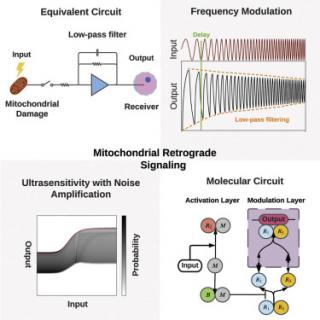Nov, 2022

Mitochondria, semi-autonomous eukaryotic organelles, participate in energy production and metabolism, making mitochondrial quality control crucial. As most mitochondrial proteins are encoded by nuclear genes, maintaining mitochondrial function and quality depends on proper mitochondria-nucleus communication and designated mitochondrial retrograde signaling. Early studies focused on retrograde signaling participants and specific gene knockouts. However, mitochondrial signal modulation remains elusive. A mathematical model based on ordinary differential equations was proposed to simulate signal propagation to nucleus following mitochondrial damage in yeast. Mitochondrial retrograde signaling decisions were described using a Boolean model. Dynamics of retrograde signaling were analyzed and extended to evaluate the model response to noisy damage signals. Simulation revealed localized protein concentration dynamics, including waveforms, frequency response, and robustness under noise. Retrograde signaling is bistable with localized steady states, and increased damage compromises robustness. We elucidated mitochondrial retrograde signaling, thus providing a basis for drug design against yeast and fungi.